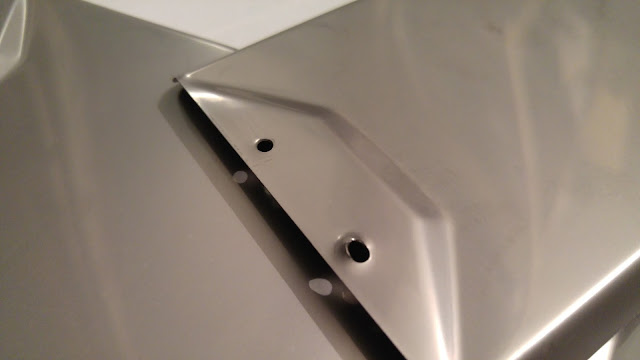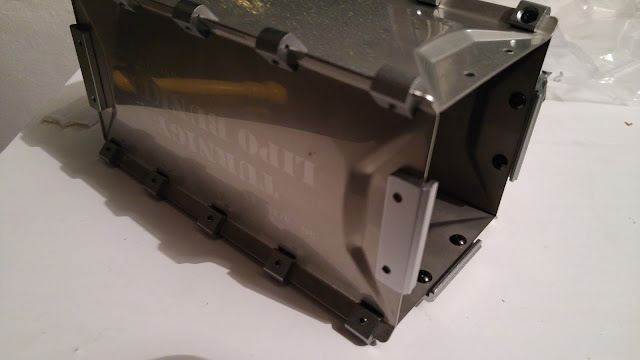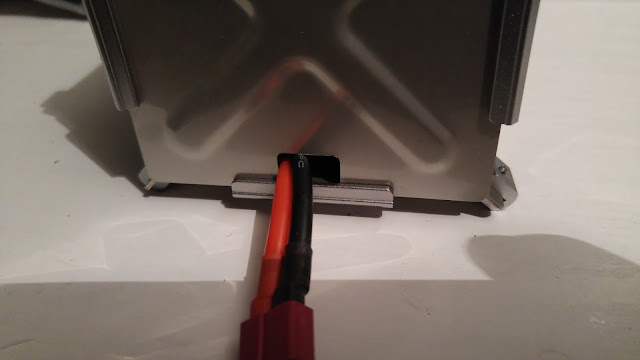What is this
This is not a review where I burn a LiPo inside it... Although, that would have been nice!
What HobbyKing says
Constructed from S304 certified stainless steel to withstand temperatures in excess of 800 degrees Celsius, the Turnigy lipo Bunker is a bullet proof safety enclosure designed to contain flames and help minimize damage to surrounding objects in the event of a lipoly failure. The duct will ensure heat, flames and gases being expelled from a lipoly battery will be vented in a direct and controlled manner.
Specs.
- Case Material: S304 Certified Stainless Steel
- Dimensions: 180mm x 90mm x 90mm
Packaging
The product came inside a zip-lock plastic bag, and packaged HobbyKing style, inside a cardboard box.
Each side metal plate was coated on one side with plastic coating, so it would prevent scratching during molding process.
There was the exact number of screws available inside the bag, so you should be careful not to lose any.
One of the side plates had a defect on one a hole:
Other than that, the rest of the kit was pretty much precise and no other problems found.
Building the thing
There were no instructions inside the bag, but it was fairly easy to build it. Keep in mind, the small countersunk screws are for the edges and the larger screws are for the caps. When I finished building it I was left with two screws and a thingy :)
An electric screwdriver I had was great, and I used a PH1 head... But that was not that good. Maybe a PZ1 would have worked better, but I was lazy and did not try one.
LiPo fitting
There is enough space in there for a considerable size 6S I think...
I put inside a 5000MAh hard pack LiPo and there is enough room on the cable hole to pass 12AWG wires and balancer too. Not much left after that... I guess you could fit inside more packs but you wont be able to charge more than two at once.
One more thing: the edges around the cable hole are pretty sharp, so you may want to add some power tape or something, so you can protect the battery wires.
Final thoughts
The product description states that the plates are made from S304 certified stainless steel.
Wikipedia says this about it:
SAE 304 stainless steel, also known as A2 stainless steel (not the same as A2 tool steel) or 18/8 stainless steel, European norm 1.4301, is the most common stainless steel. The steel contains both chromium (usually 18%) and nickel (usually 8%) metals as the main non-iron constituents.[1] It is an austenite steel. It is not very electrically or thermallyconductive and is non-magnetic. It has a higher corrosion resistance than regular steel and is widely used because of the ease in which it is formed into various shapes. It contains 17.5–20% chromium, 8–11% nickel, and less than 0.08% carbon, 2% manganese, 1% silicon, 0.045% phosphorus, and 0.03% sulfur.[2]
Other reviewers said that that plates are aluminium (because the non-magnetic), and I was curious about that. As you can see above, the 304 stainless steel is non-magnetic.
Another interesting thing is the stated temperature the box can withstand (> 800 degrees) and that appears to be correct also:
Good oxidation resistance in intermittent service to 870°C and in continuous service to 925°C. Continuous use of 304 in the 425-860°C range is not recommended if subsequent aqueous corrosion resistance is important. Grade 304L is more resistant to carbide precipitation and can be heated into the above temperature range. source.
So, in conclusion, can this box contain a LiPo fire? I don't know and I don't want to find out. It appears so. $25 for (extra) peace of mind, expensive or not that you can decide for yourself.















No comments:
Post a Comment